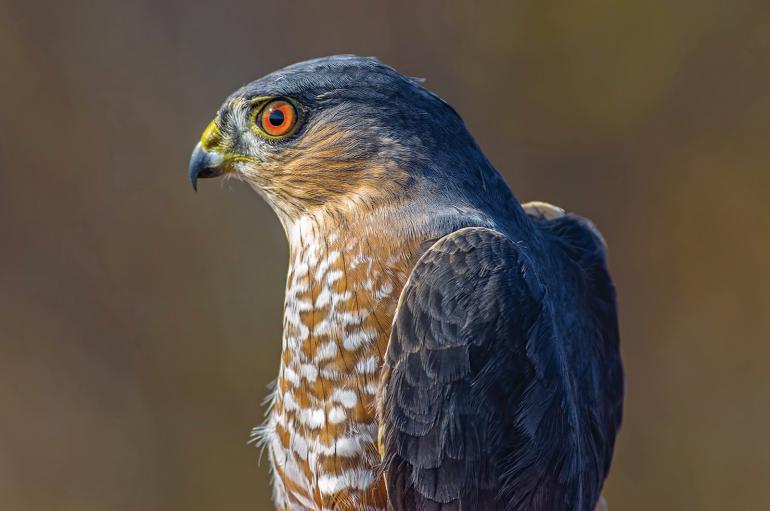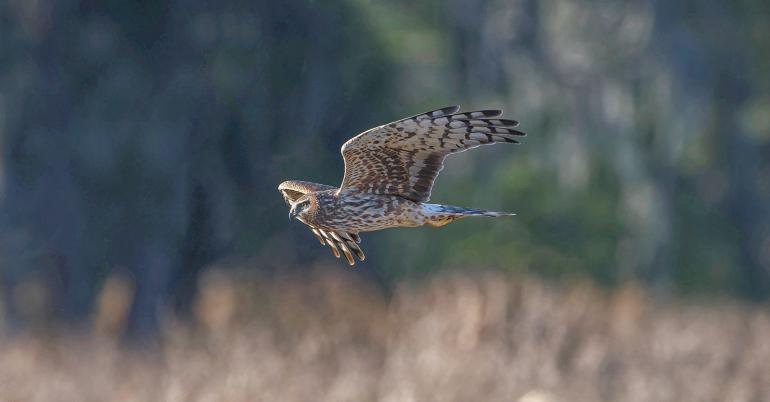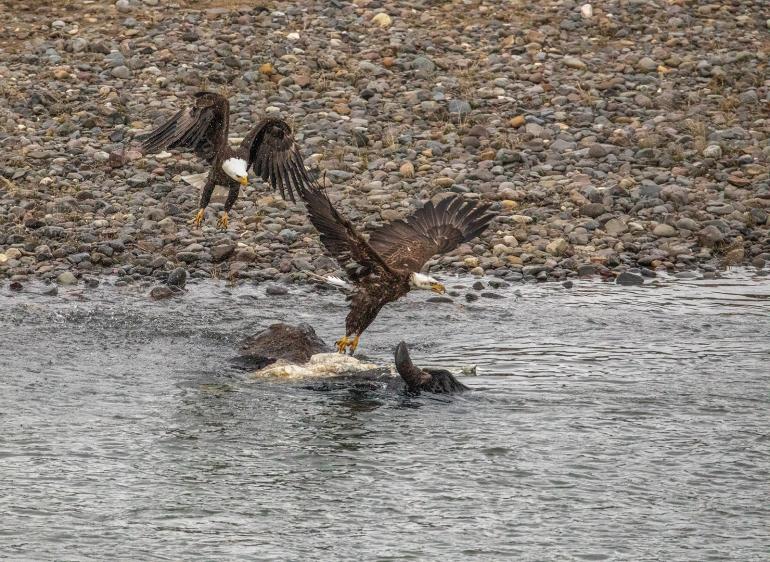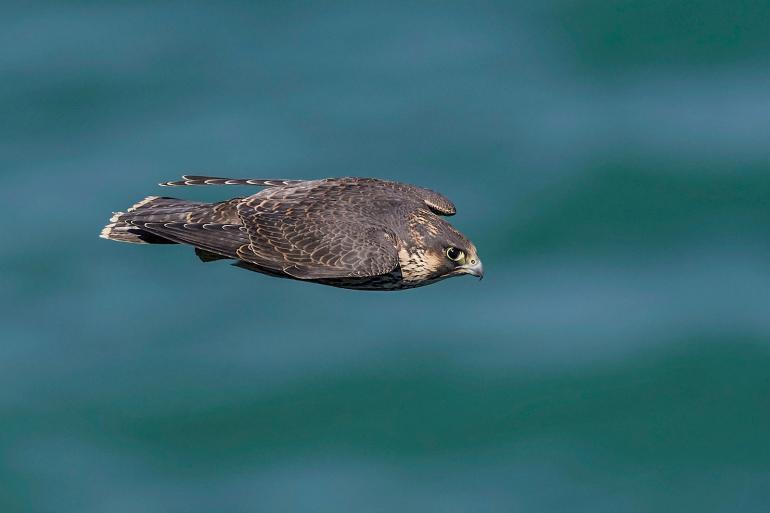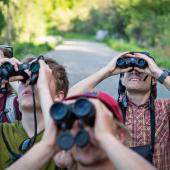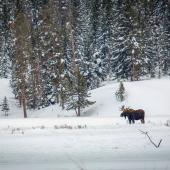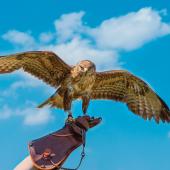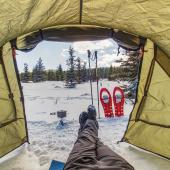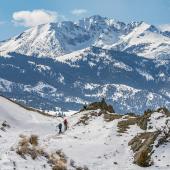Bird Brain
A raptor-identification quiz.
Think you’re an avian expert? A bird-of-prey pundit? A walking raptorial resource? Here’s a chance to test your chops (or lack thereof). All of the questions are based on birds of prey that are observed and counted in the Bridger Mountains during the fall raptor-migration count. The real question is whether you’ll soar or beak-dive?
EASY
If birding were easy, everyone would do it. These questions may be a bit challenging for novices, but light work for an experienced Bozeman bird-watcher.
Q1: Which raptor is the fastest animal on Earth?
A. Golden eagle
B. Peregrine falcon
C. Prairie falcon
D. Osprey
Q2: What raptor primarily eats fish and has reversible outer toes to help catch its slippery sustenance?
A. Bald eagle
B. Prairie falcon
C. Golden eagle
D. Osprey
Q3: Which hawk is known for its high-pitched, descending “kee-eeeer” scream—often used as an eagle’s screech in movies?
A. Broad-winged hawk
B. Swainson’s hawk
C. Red-tailed hawk
D. Sharp-shinned hawk
Q4: Which North American raptor has the best sense of smell?
A. Bald eagle
B. Cooper’s hawk
C. Swainson’s hawk
D. Turkey vulture
Q5: What is the smallest North American raptor, also known for eating insects almost exclusively?
A. American kestrel
B. Merlin
C. Sharp-shinned hawk
D. Prairie falcon
Q6: Which raptor often steals food from others instead of hunting for itself?
A. Red-tailed hawk
B. Bald eagle
C. Northern harrier
D. Rough-legged hawk
MEDIUM
Let’s take it up a notch. These questions require a sharper, keener knowledge—similar to the talons and eyesight of our raptor friends. Don’t get ruffled feathers if you miss a few.
Q7: Which of these raptors is not a buteo?
A. Ferruginous hawk
B. Red-tailed hawk
C. Sharp-shinned hawk
D. Rough-legged hawk
Q8: Which hawk—sometimes called the “gray ghost”—is known for its white rump and buoyant, stealthy flight over open country?
A. Cooper’s hawk
B. Ferruginous hawk
C. Northern harrier
D. Red-tailed hawk
Q9: What genus of raptor is known for its broad wings, short tails, and chunky bodies—classic “soaring” hawks?
A. Buteo
B. Accipiter
C. Falco
D. Pandion
Q10: What is currently the biggest threat to raptor populations?
A. Natural predators
B. Territory disputes with same species
C. Human activities
D. Owls
Q11: What is the typical size difference between male and female raptors?
A. Males are typically twice as large
B. Males are typically three times larger
C. Females are about a third larger
D. There is no difference
Q12: What genus of raptor is defined by quick, agile flight through dense forests and the hunting of small birds?
A. Buteo
B. Accipiter
C. Falco
D. Cathartes
Q13: Which feathery-footed raptor is typically the last migrant to show up each fall in Montana?
A. Rough-legged hawk
B. American goshawk
C. Ferruginous hawk
D. Golden eagle
HARD
These questions aren’t for the casual hawk-gawker. If you answer them correctly, be sure to shake your tail feathers.
Q14: Which of the following raptors is not observed along the Bridger flyway during fall migration?
A. Red-tailed hawk
B. Golden eagle
C. Prairie falcon
D. Red-shouldered hawk
Q15: Which large hawk migrates all the way to South America each winter?
A. Red-tailed hawk
B. Swainson’s hawk
C. Ferruginous hawk
D. Broad-winged hawk
Q16: Which raptor shows the most extreme reverse sexual size dimorphism?
A. Turkey vulture
B. Sharp-shinned hawk
C. Ferruginous hawk
D. Golden eagle
Q17: Which raptor has the largest wingspan of all the buteos observed in the Bridgers?
A. Red-tailed hawk
B. Golden eagle
C. Rough-legged hawk
D. Ferruginous hawk
As one of three observers for the 2024 Bridger Mountains Hawk Migration Project, Adam Brown spent last August through October on the Bridger ridge, counting birds by day and sleeping in the Penthouse (a.k.a., Bridger Bowl Patrol Shack) by night.
Answers:
1. B, 2. D, 3. C, 4. D, 5. A, 6. B, 7. C, 8. C, 9. A, 10. C, 11. C, 12. B, 13. A, 14. D, 15. B, 16. B, 17. D



